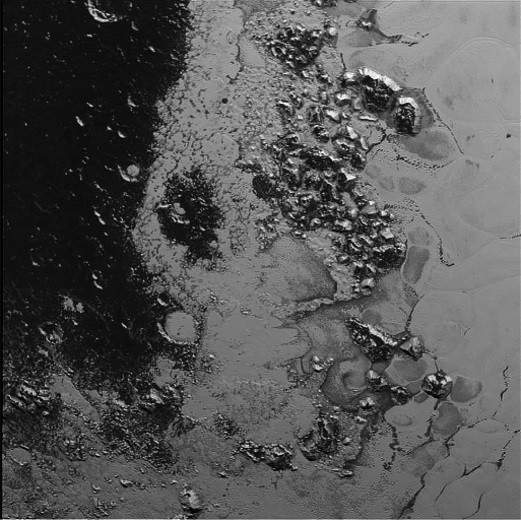Pluto's "heart" possesses an icy mountain range based on new findings from NASA's New Horizons spacecraft after conducting its first ever flyby of the dwarf planet, after travelling almost 3 billion miles across space for almost 10 years. However, another second mountain range was revealed, making Pluto's surface more complex than ever before.
This heart shaped region on Pluto called the "Tombaugh Regio" was revealed by the New Horizons probe a few days after it made its closest approach. The first mountain ranges discovered by New Horizons called the "Norgay Montes" is located at the lower left region where these new peaks are also found within this area, between icy plains and darker terrain pockmarked with craters.
NASA describes this geological feature as frozen peaks that are estimated to measure half a mile to one mile in height which is also as high as the Appalachian Mountains found in the United States. The Norgay Montes on the other hand, was discovered on July 15 which is roughly taller than the Rocky Mountains.
This slightly smaller mountain range is found some 68 miles northwest from the first icy mountain ranges. For mission scientists, this find is particularly exciting as they slowly are deciphering Pluto's surface composition, where the lighter and darker regions meet.
Scientists also believe that the darker regions are incredibly ancient, developing over the course of billions of years. The lighter rocky regions are relatively younger, which is less than 100 million years old, researchers estimate. The brighter areas are thought to be craters that are almost perfectly round and smooth in appearance.
According to New Horizons Geology, Geophysics and Imaging Team (GGI) leader, Jeff Moore from the Ames Research Center, there is certainly a distinction between the younger plains found in the east and the darker, heavily cratered regions in the west. This suggests that there is a complex geological process still occurring that we are still trying unravel.
With the help of the New Horizons' Long Range Reconnaissance Imager, this new image was created to showcase these new icy mountains some 48,000 miles below Pluto's surface, taken on July 14.




























